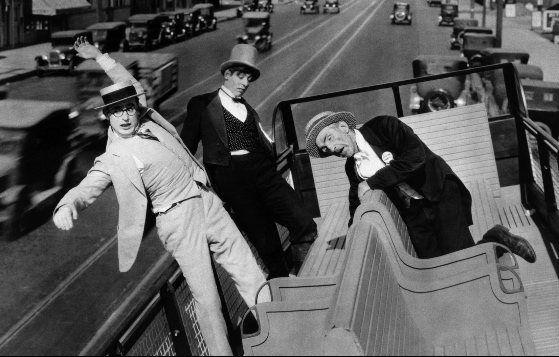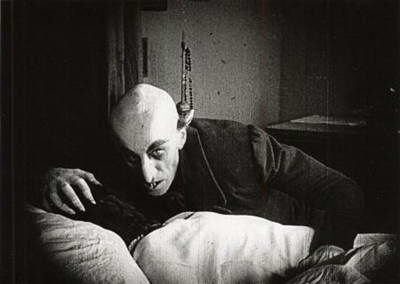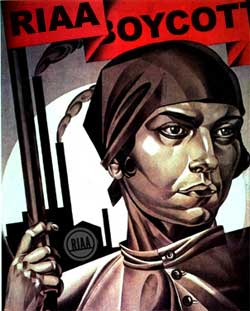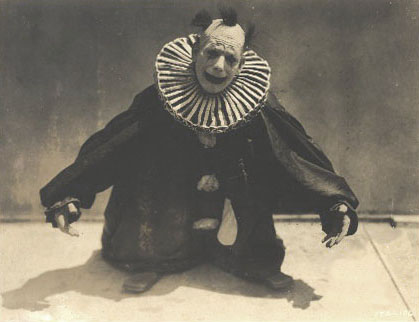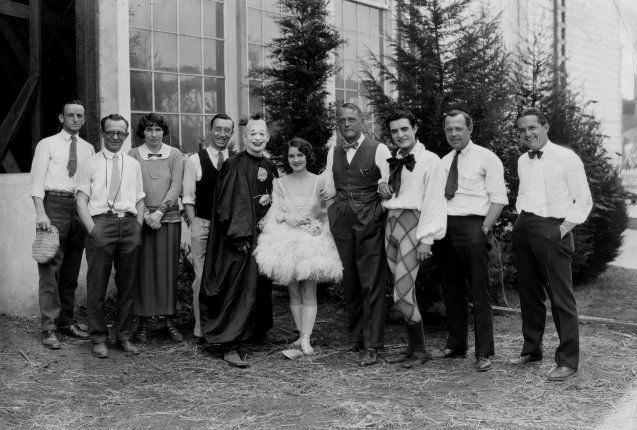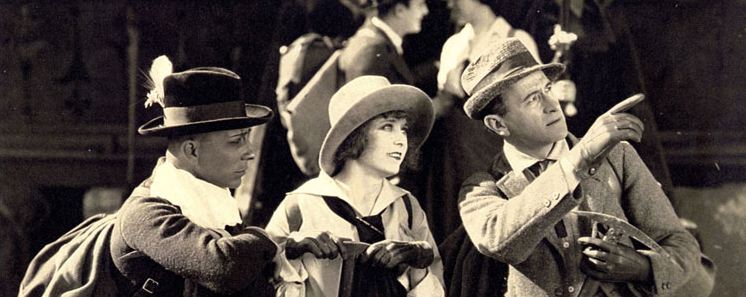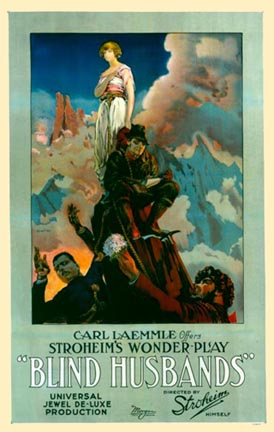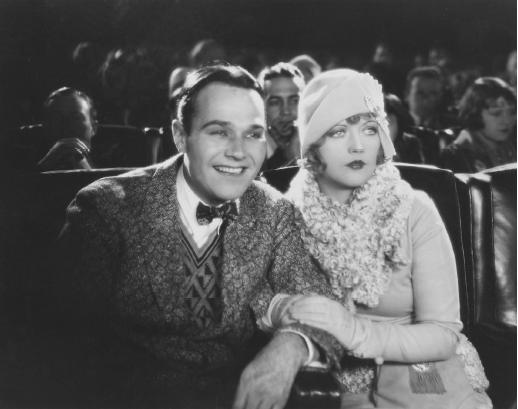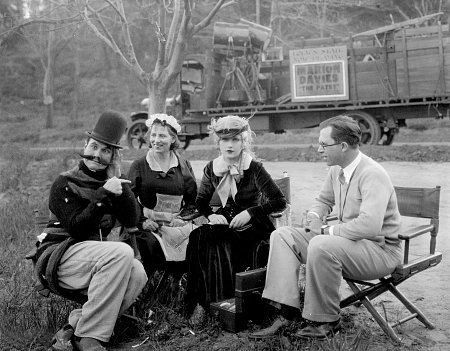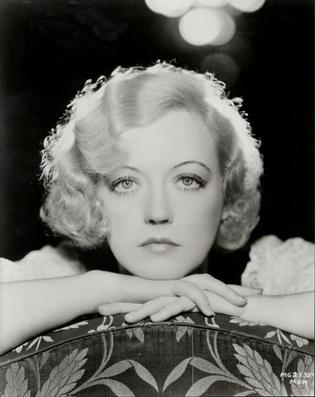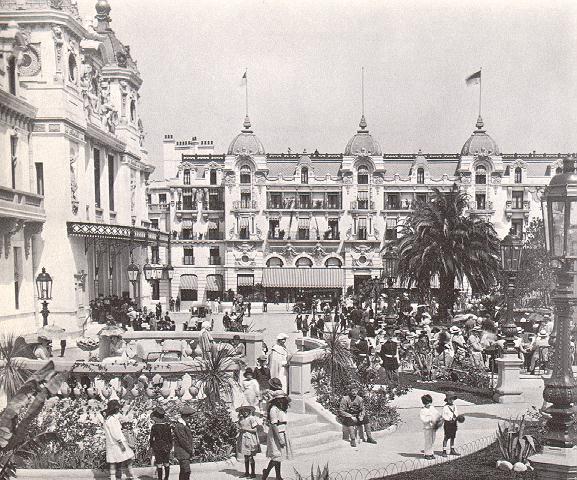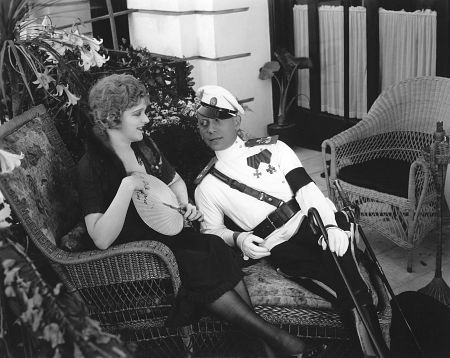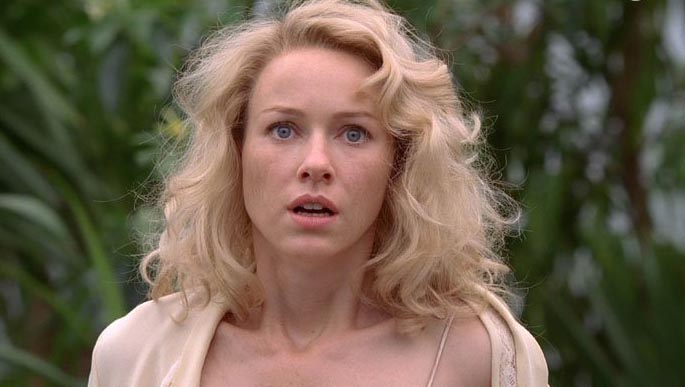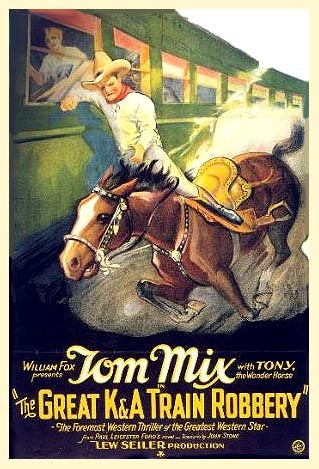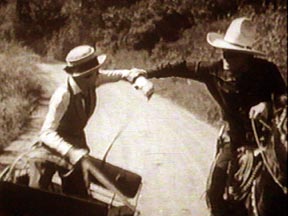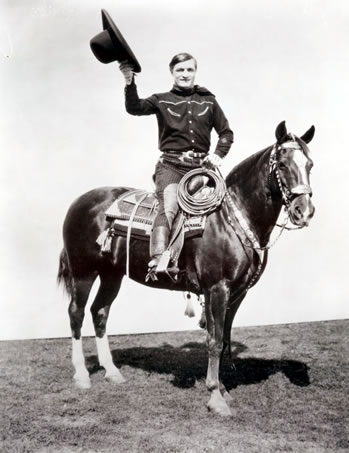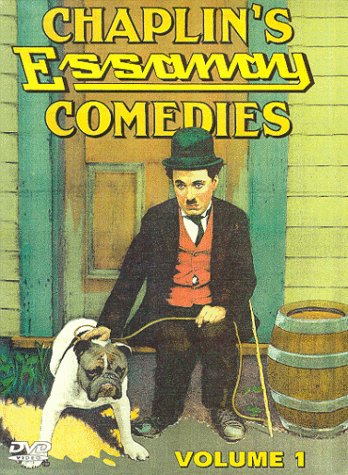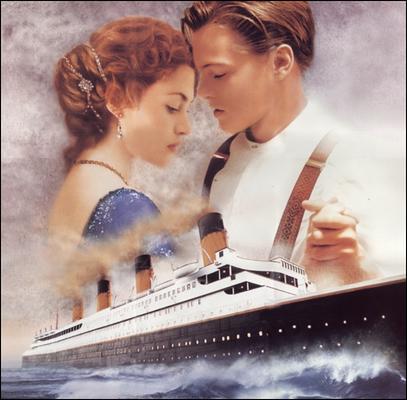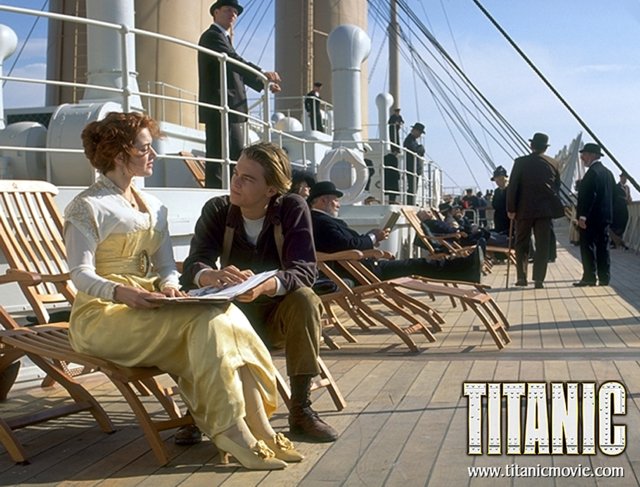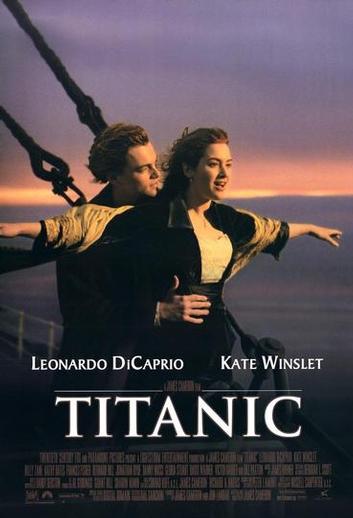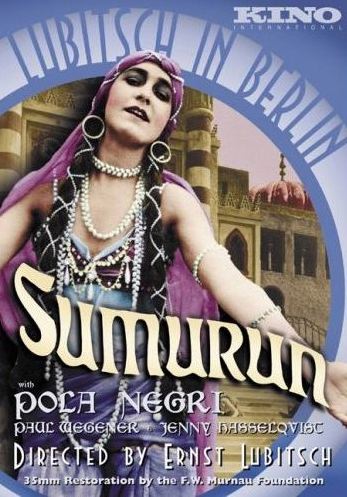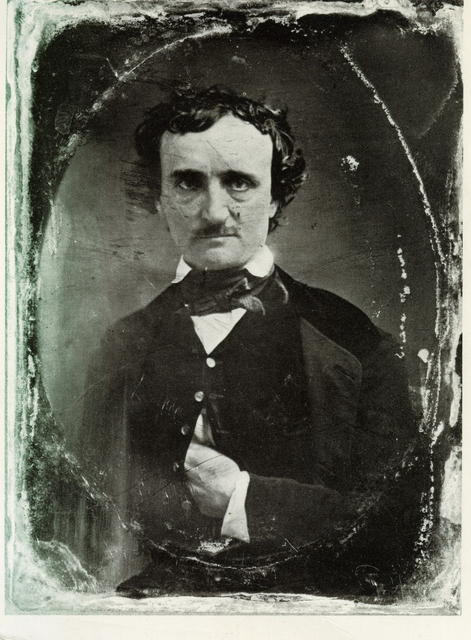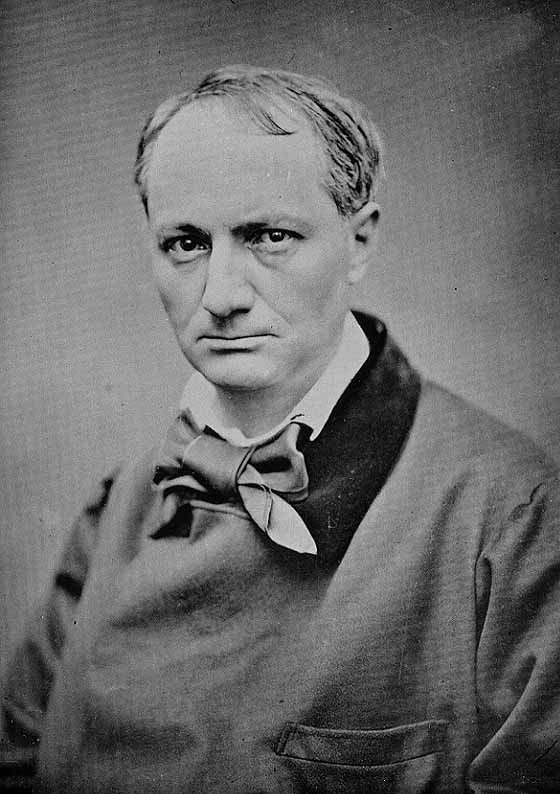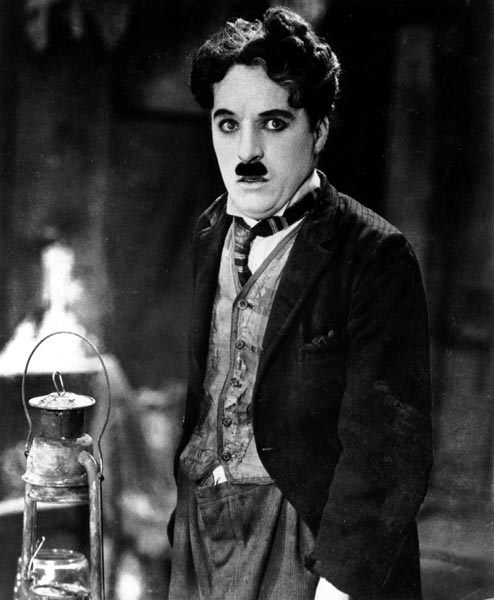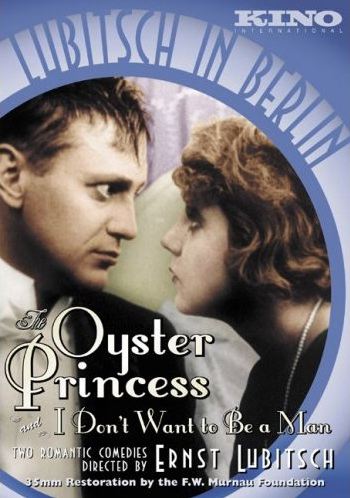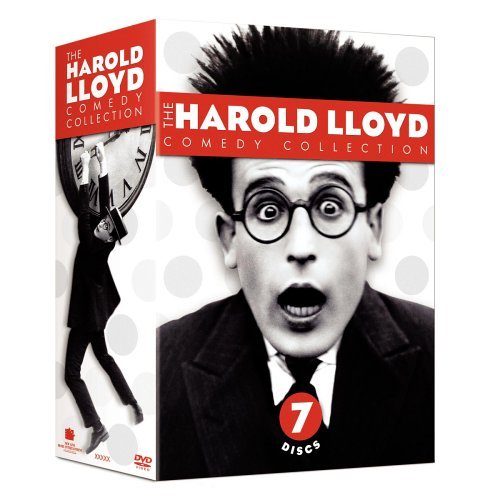
The recent Harold Lloyd box set is both a miraculous treasure and a
daunting challenge.
Like most people of a certain age I got to know the work of Chaplin and
Keaton slowly, in bits and pieces, over the course of many years,
starting with the 8mm Blackhawk versions of the Chaplin Mutuals my
friends and I collected in high school, continuing through occasional
college campus screenings and the theatrical reissues of the 60s and
70s.
This gave one time to absorb the bewildering genius of these two great
artists.
Lloyd’s most important films were much harder, in many cases
impossible, to find. Before the release of the Lloyd box set I think
I’d only seen Haunted Spooks and Safety Last — enough to know that
Lloyd was a force to be reckoned with but hardly enough to appreciate
the full measure of his achievement.
Now, getting so much of Lloyd’s work all at once, in the fine transfers
on the new set, I find myself a bit overwhelmed — it’s really too much
to react to in detail — but my first impressions of it go something
like this . . .
Having watched each film in the set at least
once, it’s clear to me that Lloyd was not only a filmmaker of equal rank with
Chaplin and Keaton, but of equal rank with any filmmaker in the history
of movies. With such an artist, it makes almost no sense to
compare and contrast him point for point with his peers — one loves
him for his unique genius.
The center of that genius was Lloyd’s instinctive love for and
understanding of the film medium. He didn’t comment on it as part of
his method, the way Keaton did, but he used it with unabashed joy and
energy, and with a supreme mastery that’s still dazzling.
There is hardly any film in the new set that doesn’t have its
exhilarating moments, though this is not to say that all the films
succeed equally as unified works. What distinguishes one from the
other is a central problem Lloyd seemed to wrestle with creatively
throughout his career — the nature of the character he’s playing and
its place in the particular story he’s telling.
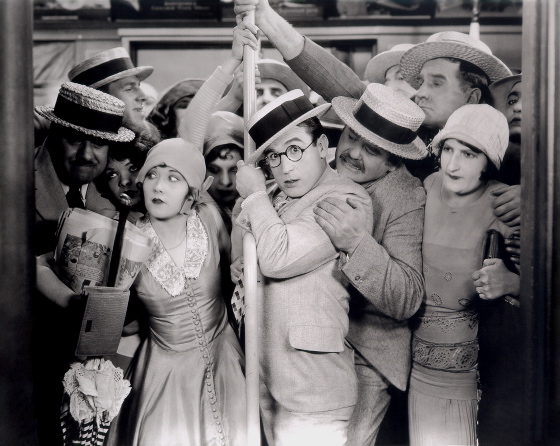
The “glasses character” is an everyman in the sense that he presents
himself, whether rich or poor, urban or rural, as a fellow of ordinary
capacities who is impelled at some point to do extraordinary things.
These “extraordinary things” were clearly what inspired Lloyd the
filmmaker most centrally. He usually thought up the final chase or
thrill climax for his films first, and then worked backwards to create
a narrative rationale for the action in that last reel.
Lloyd’s last reels are almost always brilliant — the narrative rationales vary greatly in kind and quality and determine the success or failure of the films as stories, as whole works.
As a general rule I would say that the films in which the glass
character is motivated primarily by a desire for success, financial or
social, are the least satisfying, even when that desire for success is
linked to the character’s desire to win the approval of a girl. These
films of course reflected the values of a different time, the Roaring
Twenties, in which unbridled material ambition was seen as a primary
American virtue, but the attitude struck even some observers of the
time as shallow and disturbing, and it hasn’t aged well.
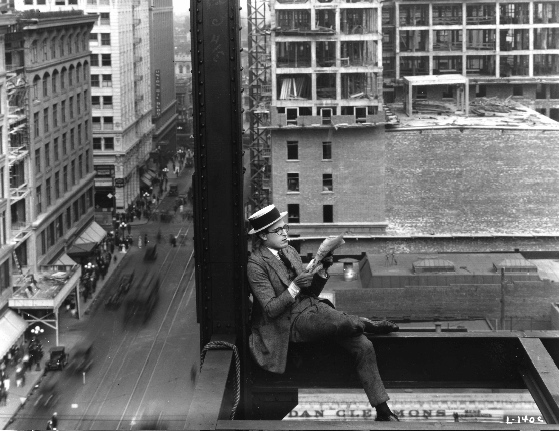
The “romantic” premise of both Safety Last and Girl Shy is that the
glass character must achieve financial success in order to win the hand
of his beloved. This tends to undercut the “romance” angle
considerably — can’t true love rise above a concern for cold hard
cash? — and turns the “hero’s journey” into the hustler’s
progress. (In these films we see the genesis of James Agee’s brilliant
observation about Lloyd — he “wore glasses, smiled a great deal, and
looked like the sort of eager young man who might have quit divinity
school to hustle brushes.”) The last reels of both these films are so
exciting cinematically that we hardly remember what got us to them, but
the excitement is curiously unemotional, like a ride on a
roller-coaster.
Similarly, the desire of the freshman in the film of that name to be
liked by people who are frankly presented as jerks strikes an odd
note. Lloyd knew that social embarrassment, and even social
humiliation, are good material for gags, but how can one be seriously
embarrassed or humiliated by jerks unless one is a bit of a jerk
oneself? At best this tends to undercut our sympathy for the freshman
— at worst it puts us squarely in the camp of the jerks who are laughing at him,
too. The emotional set-up is off-kilter in The Freshman, as is the
emotional pay-off. We’re told that the protagonist needs to be
himself, stop trying to gain his self-esteem from the opinions of
others — but then he impersonates a football player and achieves
spectacular success on the field as thousands cheer. The episode is
wonderful, hilarious, magical even — but it doesn’t jibe emotionally
or thematically with the rest of the film.
I would argue that Lloyd’s greatest films, his masterpieces, are the
ones in which the glass character has something more interior to do
than gain wealth or status — who has some inner weakness or
selfishness to overcome before he can win the day and be worthy of his
girl.
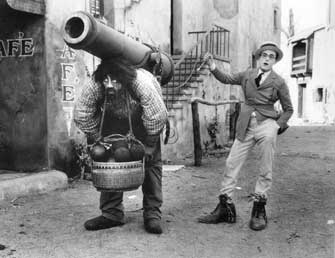
These masterpieces would include Why Worry? and For Heaven’s Sake,
in both of which Lloyd plays a character who’s already rich but lacks
inner grit and empathy until spurred on to them by the leading lady.
They would include The Kid Brother, in which the protagonist needs to
grow up and establish his own identity in the face of obstacles both
domestic and foreign. None of these films has a last reel as awesome
as the ones mentioned above, but they’re awesome enough, and to me more
satisfying, because they reflect deeper emotional transformations in
the film’s central characters.
Because the glasses character isn’t a clown, doesn’t have a clown persona
that migrates more or less intact from film to film, Lloyd always had
to ask who his protagonist was, what he wanted, this time out. The
nature of the answers he came up with ultimately determined the overall
quality of the films as satisfying stories, as unified works of art.
Watching the business on the building in Safety Last or the
race-to-the-rescue to end all races-to-the-rescue in Girl Shy, you won’t be troubled with
such reflections — they become, for the moment, quite irrelevant. But the
next time you come back to the films — and Lloyd’s films are films
that can be watched with profit over and over again, if only for their
sublime cinematic inventiveness — you may feel differently, and long
for the more modest but more moving pleasures of Why Worry?, For
Heaven’s Sake and The Kid Brother.
